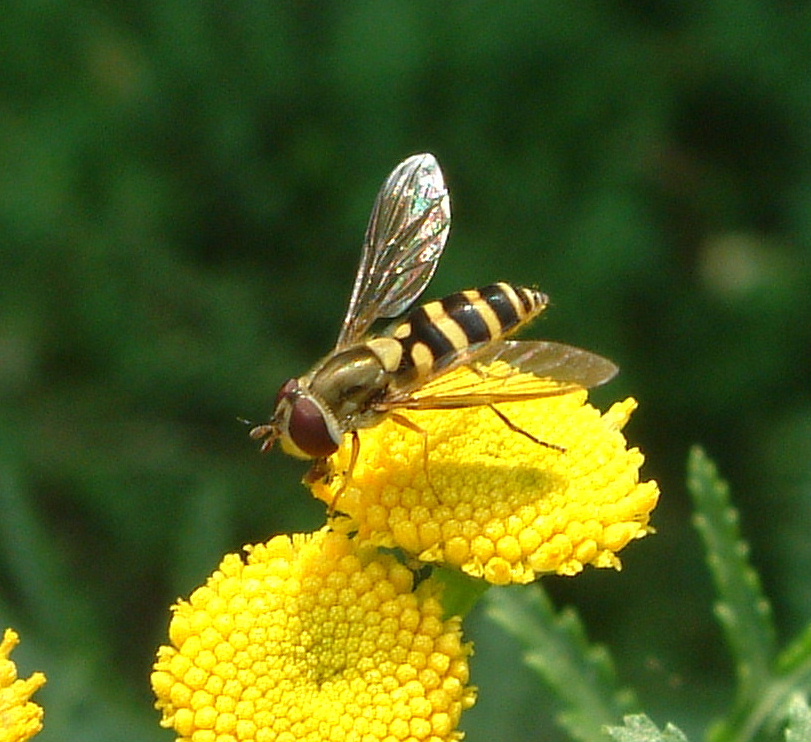
Flies are more important as pollinators than is commonly realized. In gardens and meadows where you find bees, wasps, and other expected pollinators, you almost always find an assortment of flies visiting flowers. Although they are smaller, and more difficult to notice, they contribute greatly to the pollination of flowers, largely because there are so many of them.
All true flies have only one pair of wings, a soft body and short bristly antennae, and they have no stinger. The two-winged fly is an advancement in flight over all of the four-winged body types, and experiments with fruit flies have demonstrated that two-winged flight evolved from four-winged flight.
The most important fly pollinators are Hover Flies (Syrphid flies) and Bee Flies (Bombyliidae family), but there are many others that visit flowers to feed on nectar. The common fly pollinators have developed yellow and black stripes on their abdomens, though they are not related to bees or wasps. This is probably a defense mechanism to deter predators; flies pretending to be stinging insects, though they cannot sting.
In your observations, the best way to tell a striped fly from a bee is to watch its flight. Flies frequently hover in mid-air, like hummingbirds. The more primitive four-winged bees are not aerodynamically capable of this advanced maneuver. Hover flies are delightful to watch, once you learn to notice them!
Fly Profiles
Pollinator Profile: Hover Flies
Pollinator Profile: Bee Flies COMING SOON
